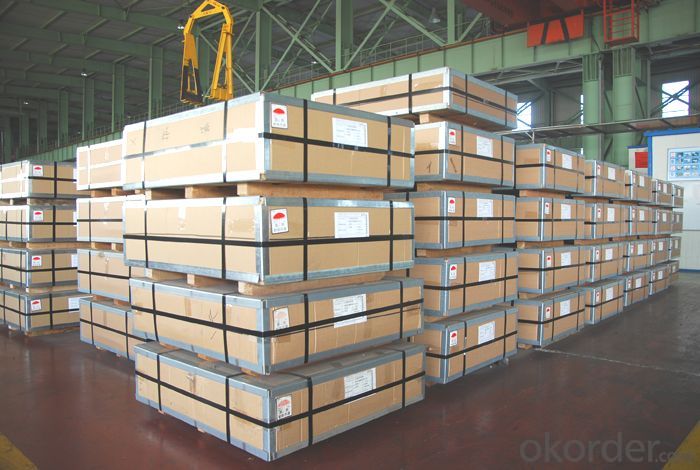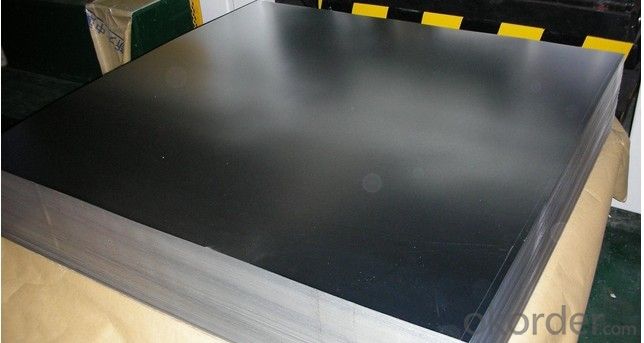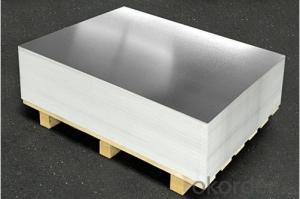Prime Stone Finish ETP Electrolytic Tinplate for Metal Packing
- Loading Port:
- Tianjin
- Payment Terms:
- TT OR LC
- Min Order Qty:
- 100 m.t.
- Supply Capability:
- 40000 m.t./month
OKorder Service Pledge
OKorder Financial Service
You Might Also Like
Specification
Prime Stone Finish ETP Electrolytic Tinplate for Metal Packing Description
| Steel Type | MR | ||
| Temper(BA&CA) | T1~T5, DR8, DR9 | ||
| Coating | 1.1~11.2g/m2 (Both Equal and Differential) | ||
| Thickness and tolerance | 0.15~0.50mm(Tolerance: _+0.01 mm) | ||
| Width & tolerance | 300~1000mm (Tolerance: 0~3mm) | ||
| Cut length & tolerance | 450~``50mm (Tolerance: 0~3mm ) | ||
| Coil inside diameter | 420/508mm | ||
| Coil Weight | 3~10 MT | ||
| Passivation | 311 | ||
| Oiling | DOS | ||
| Surface Finish | Bright, Stone, Silver, Matte | ||
| Packaging | Seaworthy Standard with wooden pallet | ||
| Standards Available | GB/T2520, JIS G3303, ASTM A623M & EN10202 | ||
| Special specitications are available on request. | |||
Prime Stone Finish ETP Electrolytic Tinplate for Metal Packing China
Tinplate can ensure food hygiene and minimize the possibility of corruption, effectively
prevent the danger to health, but also in line with modern convenience in tinplate packaging
of canned food diet, rapid demand, tea packaging, coffee packaging, health careproduct
packaging, candy wrappers, cigarette packaging, gift packaging, food packaging containers
are preferred.As well as other miscellaneous cans of the oils and fats cans, chemicals
cans, beverage cans, spray cans, and and so on on.
Prime Stone Finish ETP Electrolytic Tinplate for Metal Packing Images



Prime Stone Finish ETP Electrolytic Tinplate for Metal Packing Specification

FAQ of Prime Stone Finish ETP Electrolytic Tinplate for Metal Packing
How long does it take to get the product if i place an order?
With the process of your requirements,we will pack and deliver in 3-7 days.If it is by sea shipment,it will take 15-45 days depending on different locations.
- Q: How does tinplate contribute to the resistance of marine equipment?
- Tinplate contributes to the resistance of marine equipment by providing a protective barrier against corrosion. The tin coating on the steel substrate acts as a sacrificial layer that prevents the underlying metal from coming into contact with moisture and saltwater, which are common in marine environments. This corrosion resistance property of tinplate helps to prolong the lifespan of marine equipment and ensures its durability even in harsh conditions.
- Q: How is tinplate coated for promotional items?
- Tinplate is typically coated for promotional items through a process known as electroplating. This involves immersing the tinplate in an electrolyte solution and passing an electric current through it, causing a layer of tin to deposit onto the surface. This coating not only enhances the appearance of the promotional items but also provides protection against corrosion and improves their durability.
- Q: The difference between a matte tin plate and a bright tin plate
- Smooth tinplate:Smooth surface refers to the surface of tin in general tin, through the soft melting so that the surface has a metallic luster.
- Q: How does tinplate perform in terms of product protection?
- Tinplate performs exceptionally well in terms of product protection. Its strong and durable nature ensures excellent resistance against corrosion, moisture, and oxygen, thus safeguarding the contents from external elements. Additionally, its ability to provide an airtight seal helps in preserving the product's freshness, flavor, and quality for an extended period. Overall, tinplate is a reliable and efficient packaging material for ensuring optimal product protection.
- Q: How does tinplate contribute to the durability of gardening tools?
- Tinplate contributes to the durability of gardening tools by providing a protective coating that prevents rust and corrosion, extending the lifespan of the tools.
- Q: What is the use of tinplate printing tin, storage of food safety
- Tinplate was first imported into China from abroad. It is a kind of iron with better quality and is made of extremely thin iron sheet
- Q: Can tinplate be used for chemical storage containers?
- Yes, tinplate can be used for chemical storage containers. Tinplate is a type of steel coated with a thin layer of tin, which provides excellent resistance against corrosion. This makes it suitable for storing various chemicals, as it helps to prevent any reaction between the stored substance and the container. Additionally, tinplate is durable and has good strength, making it a reliable option for chemical storage.
- Q: What are the advantages of using tinplate for furniture?
- One of the advantages of using tinplate for furniture is its durability. Tinplate is known for its strength and resistance to corrosion, making it a long-lasting material that can withstand everyday wear and tear. Additionally, tinplate is also lightweight, making it easier to move and rearrange furniture pieces. Its versatility allows for various design possibilities, as it can be easily shaped and molded into different forms. Furthermore, tinplate is an environmentally friendly option as it can be recycled, reducing waste and promoting sustainability.
- Q: What are the main differences between tinplate and tinplate laminates in terms of shelf life?
- Tinplate has a longer shelf life compared to tinplate laminates. Tinplate is made of a single layer of tin coating on steel, providing excellent corrosion resistance and protection against oxygen and moisture. Tinplate laminates, on the other hand, consist of multiple layers, with a thin layer of tin on top of a substrate material such as plastic or paper. While laminates can offer additional features like flexibility and printability, they may have a shorter shelf life due to the potential for delamination or degradation of the substrate material.
- Q: What are the main factors influencing the growth of the tinplate industry?
- The main factors influencing the growth of the tinplate industry include increasing demand for packaged food and beverages, expanding urbanization and industrialization, advancements in technology leading to improved production processes, and the growing awareness about the benefits of metal packaging such as durability, recyclability, and food safety. Additionally, economic growth in emerging markets and the rising disposable income of consumers are also driving the growth of the tinplate industry.
Send your message to us
Prime Stone Finish ETP Electrolytic Tinplate for Metal Packing
- Loading Port:
- Tianjin
- Payment Terms:
- TT OR LC
- Min Order Qty:
- 100 m.t.
- Supply Capability:
- 40000 m.t./month
OKorder Service Pledge
OKorder Financial Service
Similar products
Hot products
Hot Searches
Related keywords

























